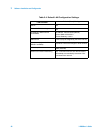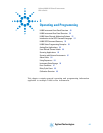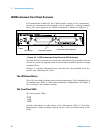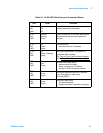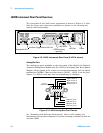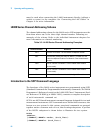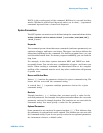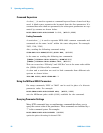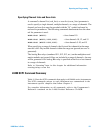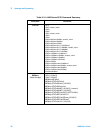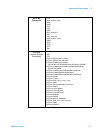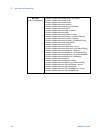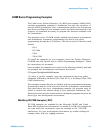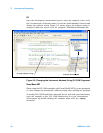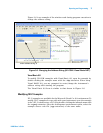54 L4400 User’s Guide
3 Operating and Programming
Command Separators
A colon ( : ) is used to separate a command keyword from a lower-level key-
word. A blank space separates the keyword from the first parameter. If a
command has more than one parameter, the subsequent parameters are sep-
arated by commas as shown below:
ROUT:CHAN:DRIV:PULS:WIDTh 0.010, (@1201,1202)
Linking Commands
A semicolon ( ; ) is used to separate IEEE-448.2 common commands and
commands at the same “node” within the same subsystem. For example:
*RST; *CLS; *IDN?;
Also, sending the following command string:
COUN:GAT:POL NORM(@1301);SOUR EXT, (@1301)
is the same as sending the following two commands:
[SENSe:]COUNter:GATe:POLarity NORM(@1301)
[SENSe:]COUNter:GATe:SOURce EXT, (@1301)
This can occur since “POLarity” and “SOURce” are at the same node within
the [SENSe:]COUNter:GATe command.
A colon and a semicolon are used to link commands from different sub-
systems as shown below:
INP:IMP AUTO;:ROUT:CHAN:DEL 1
Using the MIN and MAX Parameters
For many commands, "MIN" or "MAX" can be used in place of a discrete
parameter value. For example:
ROUT:CHAN:DRIV:PULS:WIDTh MIN, (@1201,1202)
sets the MINimum pulse width (0.001) available for the command.
Querying Parameter Settings
Many SCPI commands have a complimentary command that allows you to
query the current value of the parameters. These commands are indicated by a
‘?’ in the command syntax. For example:
ROUT:CHAN:DRIV:PULS:WIDTh? (@1201)
queries the pulse with setting for channel 1201.



